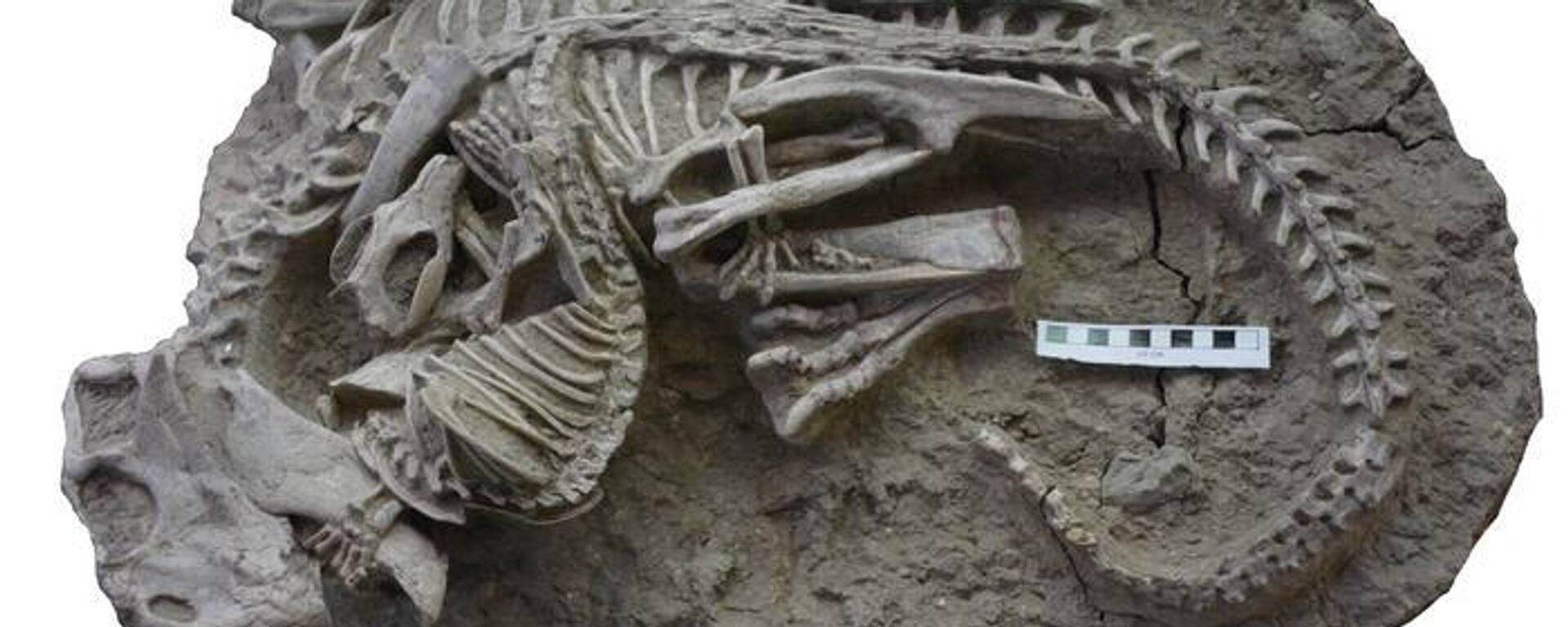https://en.sputniknews.africa/20231001/1062461524.html
New Computer Model Shows What Killed Dinosaurs
New Computer Model Shows What Killed Dinosaurs
Sputnik Africa
For years, scientists have debated the cause of the mass extinction of dinosaurs that occurred 66 million years ago. Some of the main theories were the impact... 01.10.2023, Sputnik Africa
2023-10-01T05:14+0200
2023-10-01T05:14+0200
2023-10-01T10:06+0200
mexico
science
international
history
earth
gas
dinosaurs
research
https://cdn1.img.sputniknews.africa/img/07e7/07/13/1060623873_0:42:701:436_1920x0_80_0_0_a0706c1c377d815a6b1dfc7cb55fd8a7.jpg
A new study this week shares the latest evidence in a long-running debate among scientists about what killed the dinosaurs.Now, researchers suggest it was a case of gas.That’s the conclusion of Brenhin Keller and Alexander Cox, two geologists from Dartmouth College who developed a novel way to examine the question.Most studies on the matter start by assuming the mass extinction 66 million years ago was caused by either an asteroid strike or a volcanic eruption. Keller and Cox wanted to consider the matter with as little human bias entering into the equation as possible. So they turned to computer modeling.For their data input, they looked at cylindrical cores of sediment drilled from deep underneath the ocean. Those layers of earth, flecked with microorganisms called foraminifera, offer clues about ocean acidity over time and the amount of carbon and sulfur dioxide in the environment.Those two gasses are assumed to have played a role in the die-off that killed dinosaurs and 75% of all life on earth. But scientists debate whether they were released by an asteroid strike or a series of volcanic eruptions.Keller and Cox simulated different scenarios, employing a Markov chain Monte Carlo statistical model to calculate probabilities given the evidence retrieved from the cores. They found that gas released from volcanoes was a sufficient explanation for the environmental changes that spelled doom for the dinos.Meanwhile a near-simultaneous asteroid strike, leaving a massive crater in the Gulf of Mexico, had little effect.Keller and Cox were aided in their modeling effort by the parallel use of dozens of computer processors. Carried out one after another, their simulations would’ve taken more than a year to conduct. Running them simultaneously allowed them to gather their data within days.The research was published Thursday in the journal of the American Association for the Advancement of Science.
https://en.sputniknews.africa/20230719/1060623694.html
mexico
earth
Sputnik Africa
feedback@sputniknews.com
+74956456601
MIA „Rossiya Segodnya“
2023
Sputnik Africa
feedback@sputniknews.com
+74956456601
MIA „Rossiya Segodnya“
News
en_EN
Sputnik Africa
feedback@sputniknews.com
+74956456601
MIA „Rossiya Segodnya“
Sputnik Africa
feedback@sputniknews.com
+74956456601
MIA „Rossiya Segodnya“
mexico, science, international, history, earth, gas, dinosaurs, research
mexico, science, international, history, earth, gas, dinosaurs, research
New Computer Model Shows What Killed Dinosaurs
05:14 01.10.2023 (Updated: 10:06 01.10.2023) For years, scientists have debated the cause of the mass extinction of dinosaurs that occurred 66 million years ago. Some of the main theories were the impact of a large asteroid or a time of great volcanic activity, however, other possible reasons continued to be sought.
A new
study this week shares the latest evidence in a long-running debate among scientists about what killed the dinosaurs.
Now, researchers suggest it was a case of gas.
That’s the conclusion of Brenhin Keller and Alexander Cox, two geologists from Dartmouth College who developed a novel way to examine the question.
Most studies on the matter start by assuming the mass extinction 66 million years ago was caused by either an asteroid strike or a volcanic eruption. Keller and Cox wanted to consider the matter with as little human bias entering into the equation as possible. So they turned to computer modeling.
For their data input, they looked at cylindrical cores of sediment drilled from deep underneath the ocean. Those layers of earth, flecked with microorganisms called foraminifera, offer clues about ocean acidity over time and the amount of carbon and sulfur dioxide in the environment.
Those two gasses are assumed to have played a role in the die-off that killed
dinosaurs and 75% of all life on earth. But scientists debate whether they were released by an asteroid strike or a series of volcanic eruptions.
Keller and Cox simulated different scenarios, employing a Markov chain Monte Carlo statistical model to calculate probabilities given the evidence retrieved from the cores. They found that gas released from volcanoes was a sufficient explanation for the environmental changes that spelled doom for the dinos. Meanwhile a near-simultaneous asteroid strike, leaving a massive crater in the Gulf of
Mexico, had little effect.
Keller and Cox were aided in their modeling effort by the parallel use of dozens of computer processors. Carried out one after another, their simulations would’ve taken more than a year to conduct. Running them simultaneously allowed them to gather their data within days.
The
research was published Thursday in the journal of the American Association for the Advancement of Science.


